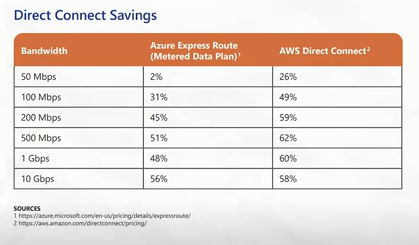Are you looking for the best way to build your digital business and connect applications and workloads stored in hybrid (public and private) and multicloud platforms with various locations?
Discover how to select the right broadband connectivity network and tools that optimize performance and reduce cost.
When it comes to cloud and connectivity, organizations need to consider the big picture. Performance unquestionably is important, yet security, cost and other factors must be considered as well.
In an earlier blog post – Choosing the Right Path to the Cloud — we highlighted some of the advantages of private direct connections to the cloud versus the public internet, as discussed during our roundtable Cloud Connects in the Midwest.
It’s important to recognize that there’s no standard recommendation that addresses the issues each enterprise faces. Security and cost are important considerations that should factor into network connectivity decisions, along with performance.
Here’s a brief recap of some additional insights about security implications and cost from Tony Thakur, Chief Technology Officer of Great Plains Communications, Todd Cushing, President at 1623 Farnam, and Daniele Loffreda, Head of Virtualized Edge Solutions Marketing at Ciena.
Security implications of public internet versus private connections to cloud services
Cloud security typically has two different schools of thought:
#1: Security in the cloud will never be better than what I can do on my own private premises. Anything that is identification-protected doesn’t belong in that public cloud.
#2: If AWS and others provide services to the federal government and have shown they can adhere to the strictest security standard, why wouldn’t I trust them?
Consider, how secure is the circuit that leaves your premise and goes out to public cloud and is there circuit diversity? In certain environments, such as healthcare and financial sectors, regulatory compliance and HIPPA rules also apply. When evaluating the best way to reduce the potential for liability and exposure, a direct connection may be preferred.
Common hidden cloud fees (and how to avoid them)
Cost always is a consideration. Various connectivity methods and associated fees should be examined. For example, using the internet doesn’t cost as much to get data to the cloud. Yet cost becomes a bigger issue when larger bandwidths are involved.
Latency sensitive, bandwidth intensive applications require extra bandwidth during peak periods. Still, you don’t want to overpay for bandwidth that’s not used in off-peak periods. It’s important to work with the service provider to really understand, for different branches spread across the Midwest, what is the most efficient way to neither under architect nor over architect the network to provide connectivity.
It should be apparent what the costs are when you’re provisioning. Flexibility for provisioning services such as a specific time-of-day type application lets you increase and decrease the bandwidth for that application accordingly.
A direct connect offers predictable cost.

Fiber connectivity is a key part of getting bandwidth and applications out to customers and a direct cloud connect is a strong option to consider.
To learn more, download The Midwest Insider’s Guide to Connecting to the Cloud.
For additional cloud strategies and trends, view our roundtable content: Cloud Connects in the Midwest.

